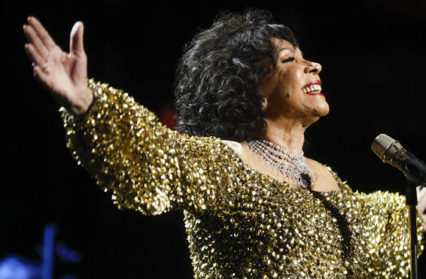As fans all over the world prepare to celebrate the tenth anniversary of Mad Men coming into their lives, Siobhan Denton takes a look back at one of television history’s most low-key phenomenons.
To refer to Matthew Weiner’s Mad Men as being sublime in the aesthetical sense may, to some, appear hyperbolic, but such is the quality of every facet of the series that any other term would not render or capture its capabilities. This year marks ten years since the series was first aired, and while subsequent shows have attempted to imitate Weiner’s work both in terms of style, tone and characterisation, it has become clear that Mad Men is unique.
Initially, the concept of Mad Men, while unusual at the time, appears relatively innocuous. Focusing on the lives of the employees of an advertising agency in New York in the 1960s, the series depicts the various romantic entanglements of the men, women and respective spouses of those who work for Sterling Cooper. In the hands of a lesser writer, the temptation would have been to heighten the drama of these affairs, and place the impact of them at the forefront of the narrative. Weiner however, is not interested in moments of cheap, clichéd drama; rather, his writing focuses on character development and subtlety.
Interestingly, it is the work of Jean Epstein that perhaps best illuminates Mad Men’s true capabilities. Epstein stated that ‘The cinema is poetry’s most powerful medium’ and this claim is entirely pertinent when considering the achievements of Weiner’s show. Not only does the carefully crafted narrative enable the viewer to witness moments of minute development within character emotions, but Weiner’s writing is, often, entirely lyrical and poetical. This poetical element is perhaps best seen in the many advertising pitches that Don Draper dedicates himself to. Don regularly references elements of nostalgia, childhood and familial ties when pitching his ideas, intentionally attempting to expose and manipulate entrenched emotions and desires. These pitches, when successful, are often successful on the strength of Don’s words, and his ability to convey core, common values. The carousel scene, for example, early on in the series, purposefully references emotionally rich traditional values in order to sway the marketing executives of Kodak.
For some, Mad Men lacks in narrative development. Certainly there is no real overarching trajectory across the seven seasons. Indeed, Weiner plays with the audience’s expectations when it comes to considering traditional narrative forms. The first two seasons are largely, supposedly concerned with Don’s origins. The viewer discovers that Don Draper is an assumed name, an identity that he has chosen to adopt, stolen from another man, in order to forgo the roots that he is ashamed of. This reveal is set up as a core narrative twist, with Pete Campbell desperate to expose Don and cause a subsequent sacking. This moment never occurs. When Don’s identity is revealed, Bert Cooper, Don’s boss, displays little interest in the subject. This reaction is clearly a didactic moment for the audience. We have been led to think that this moment will change the narrative trajectory, and indeed Don’s arc as a character, but it changes nothing. This knowledge does little to impact upon Don’s position at the company, and it does little to change our perspective of Don.
Epstein’s statement then, when writing on the concept of photogénie that ‘Presentation of characters is pointless; life is extraordinary’ is apt. Don, and indeed, any of the characters’ presentation, is not important and does not serve as the central conceit to the series. Certainly there are moments of high drama, but the audience and the characters themselves are continually reminded to ignore them, and move on. Much as when Don instructs Peggy to forget that her pregnancy and the birth of her child ever happened, so too, is the audience instructed to forget the infinitesimal and instead focus on the character as a whole. Each character is a sum of their parts, and their lives are informed by a myriad of experiences, not just one moment. Rather, it is their lives, and their everyday interactions that provides the drama and narrative development.
In ending the series, Don has a moment that can be viewed as an epistemological breakdown, an existential crisis of sorts. Neglecting for much of the series to truly care about the consequences of his actions, he is seemingly forced to confront the manner of person that he has become. He bemoans his actions to Peggy, the character to whom he is arguably closest, commenting that he has ‘scandalised his child’. After this realisation, Don leaves, retreating to a commune of sorts, where he is encouraged to refocus and meditate. It is in the final shot of Don that Weiner perhaps subverts audience expectations the most. Don, in spending time at the commune, is inspired to create the Coke advert, the iconography of which, we note, is taken directly from Don’s experiences in the final episode. This, then, is not a man who has learned the errors of his ways. Indeed, Don has learned nothing, and will likely continue to live his life as he has always done. For some, Don’s lack of change is a weakness, a superficial piece of writing that never truly delves into character complexity. Yet, arguably, it is this lack of change that is the series’ strength. This assumption that all characters must learn something, and must somehow be impacted by events that have taken place is saccharine and sentimental.
Rather, like Epstein’s wish for a film ‘in which not so much nothing as nothing very much happens’, calling for a film with little narrative, whilst retaining moments of drama and emotion, Mad Men is a series in which everything and nothing happens. A series that leaves an indelible mark upon the viewer, and, once considered in depth, demonstrates a progressive and thoughtful presentation. Weiner’s writing, to the casual viewer, is merely concerned with character wants and desires but, when considered, reveals itself to be anything but customary.












